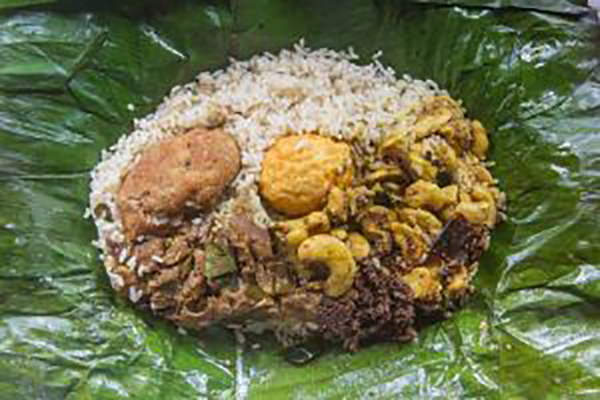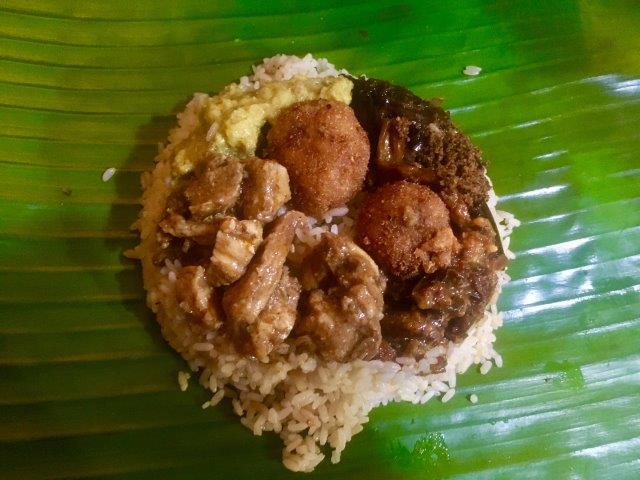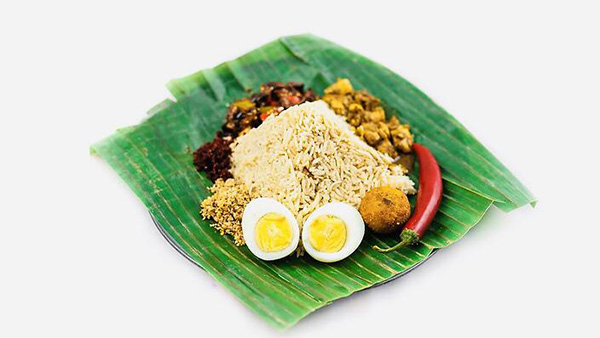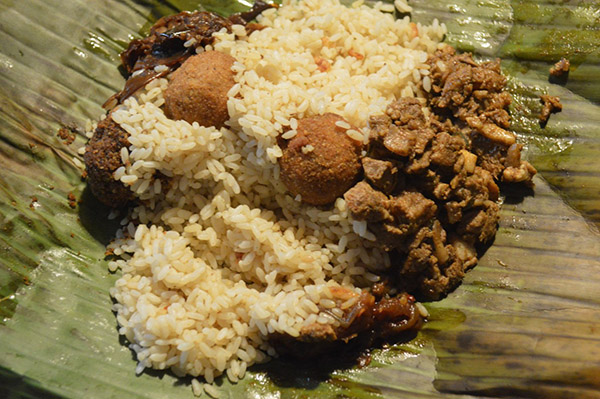“LAMPRAIS TO THE FORE” – by Des Kelly

With so much confusion or lack of information out there, these days, almost anything wrapped up in a banana leaf is being passed on, as a Lamprais. So instead of repeatedly explaining this, I decided to do a permanent “post” about it, in the interest of correcting any misconceptions that exist.
Lamprais are quintessentially a Dutch Burgher delicacy.
Just in case anyone does not comprehend the two words “Dutch-Burgher”, I will explain this as well.
When the Dutch took over the Island of Ceylon in 1640, the “Dutchies” became Burghers, because a “Burgh” in the Queen’s English was simply a Town, Suburb, or “Place of residence”, to put it briefly. That explained, let me get on with these bloody Lamprais, one of their most favourite delicacies.

The Dutch Burgher families of yore, had it down to a fine art. Only some people knew the subtleties and delights to be found in the authentic version INSPIRED by the Dutch.
That’s right, friends, Lamprais are NOT a Dutch Creation.
It was simply inspired by them, who brought some of the recipes from Indonesia. For instance, machan, Blachan was another typical Indonesian speciality, made from dried Shrimp (poor buggers).
The name “Lamprais” (or “Lomprijst, in Dutch) was probably derived from the Indonesian dish called “Lempur” which consists of cooked rice and meat, wrapped and steamed in banana leaves. Frikkadels, or deep-fried meat- balls, are quite possibly the ONLY typically Dutch-influenced dish.

The Dutch-Burgher Community, to which I thought I belonged, only to find out, that because my Surname was Kelly, although my dear mother was a Kriekenbeek, and pure Dutch (God bless her), she married a bloke by the name of Carlo Kelly (God bless him, as well), and he came from an Irish background, from Dublin, to be exact.
Therefore, the “Kelly” name was not included in the Dutch- Burgher Union files, making us “Aliens”, as a matter of fact.
The Dutchies painstakingly cut up every ingredient into tiny cubes, so that Lamprais could be eaten easily with a spoon and fork (we had another group of Citizens in Ceylon, called the “Godayas” who used to eat everything with their bloody fingers). No bones of any kind ?, were included in lamprais.
The traditionla meat curry consisted of either beef, mutton, chicken, pork, and Ox-liver cooked in a special recipe.
In the opinion of any Chef, because I fall terribly short of this talent, only being able to cook rice in an electronic cooker, without which I would not be writing this right now, it is possible to make lamprais with only Chicken, if they cannot partake of any other meats.
The other condiments/curries in a typical lamprais are Brinjal pahi, Seeni sambol, and of course, the frikkadels and blachan. Ash plantains, cubed, fried and cooked in a white sauce could be a later addition, although not compulsory.
The rice itself, has to be the finest smaller grain, which is cooked in a good rich home-made stock with spices etc.
Everything is then packed in small portions, in a SINGLE PIECE of banana leaf, folded neatly and baked until the aroma and flavour of the leaf permeates throughout the parcel or parcels, as the case may be. THAT IS LAMPRAIS.

Most importantly, the biggest INSULT to a Lamprais, is to add a hardboiled egg, or fish of any sort. Change of any of the above skilled advice would simply mean that you then have what is called a RICE PACKET, NOT A LAMPRAIS !!.
General Author, sadly unknown, BUT this has been edited by …

Desmond Kelly.
(Editor-in-Chief) e’Lanka.







